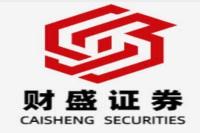China's Central Bank Injects Liquidity: A Deep Dive into the 3554 Billion Yuan Reverse Repo Operation
Meta Description: China's central bank's 3554 billion yuan reverse repo operation, interest rates, liquidity management, monetary policy implications, economic impact, expert analysis, and future outlook.
Wow, folks! Hold onto your hats! The People's Bank of China (PBOC) just pulled off a massive liquidity injection, sending ripples throughout the financial markets. A whopping 3554 billion yuan (that's over $490 billion USD!) in 7-day reverse repo operations! This wasn't just a minor tweak; this is a significant move, and it's got everyone buzzing. But what does it really mean? Is this a sign of economic slowdown? A preemptive strike against inflation? Or perhaps something else entirely? This isn't your grandpappy's economics lesson – we're diving deep into the nitty-gritty, breaking down the complexities of this operation in plain English, backed by years of experience analyzing China's financial landscape. We'll unpack the implications for businesses, investors, and everyday citizens alike. We'll explore the intricacies of monetary policy, examine the potential impact on interest rates, and offer expert insights into what this bold move might signal for the future of the Chinese economy. Forget dry academic jargon; we’re serving up a juicy, insightful analysis that's both informative and engaging. Get ready to unlock the secrets behind this monumental financial maneuver! We'll even tackle some of the most frequently asked questions, so you can walk away feeling like a financial whiz kid. So buckle up, buttercup, because this is going to be a wild ride!
Reverse Repo Operations: Understanding the PBOC's Tool Kit
Let's start with the basics. What exactly is a reverse repo operation? Imagine the PBOC as a massive bank, lending money to commercial banks. A reverse repo is essentially the PBOC borrowing money from commercial banks. It's a crucial tool for managing liquidity in the financial system. By injecting funds (like the massive 3554 billion yuan injection), the PBOC increases the amount of money circulating in the banking system. This can help lower short-term interest rates, stimulate lending and investment, and ultimately boost economic activity. Think of it like a well-timed rain shower for a thirsty economy.
This particular operation, maintaining the operation rate at 1.50%, signals a deliberate move by the PBOC. Holding the rate steady suggests a carefully considered approach, neither overly stimulating nor aggressively tightening the monetary policy. This nuanced approach is key to understanding the overall economic strategy.
The Significance of the 3554 Billion Yuan Injection
The scale of this operation – 3554 billion yuan – is truly staggering. It represents a substantial commitment to maintaining liquidity and supporting economic growth. Several factors could explain the PBOC's decision:
- Counteracting Economic Slowdown: China's economy has faced headwinds recently, with slowing growth in certain sectors. This injection could be a proactive measure to prevent a sharper slowdown.
- Managing Inflationary Pressures: While growth is slowing, inflation remains a concern. This delicate balancing act requires precise monetary policy adjustments. The PBOC needs to ensure sufficient liquidity without fueling inflation. It's a tightrope walk, my friends.
- Supporting Key Sectors: The government may be targeting specific sectors – perhaps real estate or infrastructure – with this injection, aiming to provide targeted support where it's most needed.
The PBOC's actions aren't undertaken lightly; they're informed by meticulous analysis of various economic indicators and forecasts. This isn't a knee-jerk reaction; it's a calculated move within a broader strategic framework.
Analyzing the Interest Rate: 1.50%
The decision to maintain the interest rate at 1.50% is equally significant. This suggests a cautious approach, neither aggressively easing nor tightening monetary policy. The PBOC is clearly walking a tightrope, trying to balance the need to support economic growth with the need to control inflation. This strategic approach showcases the PBOC's expertise in navigating complex economic landscapes.
Potential Impacts and Implications
The ripple effects of this massive liquidity injection will be felt across various sectors:
- Increased Lending: Banks will have more money to lend, potentially leading to lower borrowing costs for businesses and consumers.
- Stock Market Reaction: The injection could boost investor sentiment, leading to increased stock market activity. However, the market's reaction is complex and depends on various other factors.
- Currency Exchange Rates: The impact on the yuan's exchange rate is difficult to predict with certainty. It could potentially weaken or strengthen depending on global market forces and investor sentiment.
Understanding China's Monetary Policy Framework
China's monetary policy is a complex beast, influenced by numerous factors, including economic growth targets, inflation rates, and global economic conditions. The PBOC's tools are multifaceted, and the reverse repo is just one piece of the puzzle. Other tools include reserve requirement ratios (RRR), interest rate adjustments, and open market operations. The PBOC employs these tools strategically to manage liquidity, influence interest rates, and ultimately steer the economy towards its stated goals.
Frequently Asked Questions (FAQ)
Here are some of the most pressing questions surrounding this significant event, answered in a clear and concise manner:
Q1: Is this a sign of economic trouble in China?
A1: Not necessarily. While it suggests the economy might be facing headwinds, it's also a proactive measure to prevent further slowdown. It demonstrates the PBOC's commitment to maintaining stability.
Q2: Will this cause inflation to spike?
A2: The PBOC is carefully balancing liquidity injection with inflation control. The steady interest rate suggests a measured approach to avoid triggering runaway inflation.
Q3: How will this impact ordinary Chinese citizens?
A3: Potentially lower borrowing costs for loans and mortgages, potentially boosting consumer spending. However, the effects will be indirect and gradual.
Q4: What about foreign investors? Should they be concerned?
A4: Not necessarily concerned, but they should monitor the situation closely. This is a significant development that could impact market sentiment and investment opportunities.
Q5: What are the long-term implications of this action?
A5: The long-term effects are uncertain and depend on a variety of factors, including global economic conditions and the PBOC's subsequent policy decisions. It's a dynamic situation requiring continuous monitoring.
Q6: Can we expect more similar actions in the near future?
A6: It's difficult to predict the PBOC's future actions, but this significant liquidity injection suggests a willingness to intervene as needed to support economic stability.
Conclusion
The PBOC's 3554 billion yuan reverse repo operation is a significant event with broad implications for the Chinese economy. It demonstrates the central bank's proactive approach to managing liquidity and maintaining economic stability. While the full impact remains to be seen, this bold move highlights the complexities and nuances of China's monetary policy and its commitment to navigating the challenges and opportunities that lie ahead. Stay tuned – this is a story that's far from over. The financial markets will be watching closely, and we will continue to provide insightful analysis as the situation unfolds. Remember to consult with your financial advisor for personalized advice.



